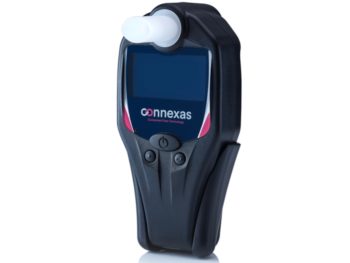Connexas has enhanced its CX-AID integrated vehicle breathalyser to help fleet managers to prepare for tightening legislation.

The Department for Transport is currently looking into a major package of measures to reduce the number of people killed and injured on roads, including plans for tougher seatbelt laws and the introduction of alcolocks, under its Road Safety Action Plan.
Alcohol interlocks have also been a talking point in recent months as they’re one of a number of technologies that the EU is looking to make mandatory on various vehicles by 2022. Research carried out earlier this year found that 90% of drivers would support in-car alcolocks.
Since then, DfT data has revealed a significant increase in drink drive-related fatalities, which rose to a median figure of 250 in 2017 – the highest level since 2009. And Brake analysis of DfT data has revealed that more than 5,000 drivers have been caught drink-driving on more than one occasion in the past four years.
Unlike standalone devices on the market, Connexas’ new alcolock device is fully integrated with the vehicle telematics system and provides real-time results and reporting via an online platform. However, improvements to the system now provide instant alerting of any failed breath tests, circumvention warnings and trend reporting, based on actual alcohol readings that can be used as a predictive and preventative tool. Users can also now benefit from the Connexas integrated camera system, with high-definition, driver-facing camera, which allows the user to see exactly who provided each breath sample.
Andrew Overton, CEO at Connexas, said: “Taking a proactive approach to fleet safety is increasingly important for all operators. In other European countries, such as France, it is already mandatory that all passenger vehicles are fitted with an alcohol interlock device. Not only is our drink drive limit the highest in Europe, the UK is also far behind many EU countries in terms of its legislation, and this shows in the rising number of drink drive-related fatalities.”

